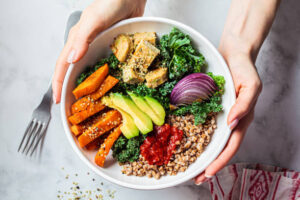The world’s waste production exceeds 2 billion tons yearly. Many of the wastes end up in landfills, where they pollute local ecosystems, emit harmful emissions, and affect public health. Waste production worldwide is expected to reach 3.4 billion tons by 2050, so this problem isn’t going anywhere anytime soon.
When it comes to environmental and waste collection services, we’ve come a long way from the regular garbage truck. Innovative new tools are transforming how the industry operates by improving sustainability, enhancing efficiency, reducing costs, and maximizing environmental impact.
The Growing Concern about E-Waste
We have become increasingly dependent on electronic devices in the fast-paced digital age. For communication, entertainment, and productivity, we rely on smartphones, laptops, and other gadgets.
Technological advancements, however, have produced staggering amounts of electronic waste (or e-waste). The improper disposal of e-waste poses significant health risks as well as environmental harm. Due to this, we urgently need to solve the growing problem of e-waste with innovative solutions.
What is Smart Waste Management?
Smart waste management involves using zero-waste technology to improve efficiency, environmental friendliness, and sustainability in waste management.
The Internet of Things (IoT) plays a significant role in the development of many of these new waste management technologies. Smart waste bins, for instance, allow businesses to track waste levels and schedule collections in real-time.
What is Zero-Waste Technology?
As a design philosophy, zero waste emphasizes not only the reuse and recycling of materials but also sustainability by considering all aspects of your product’s life cycle, from manufacture to disposal.
To promote waste prevention, this system-based approach involves:
- Creating packaging and products that are environmentally friendly
- Using less material in packaging and products
- Manufacturing and production with less toxic, less harmful materials
- Making products more durable and providing longer product lives
- Making sure products can be repaired and easily disassembled once they are no longer used
We are transforming our waste handling and keeping the planet clean through zero-waste technology, from waste management software that optimizes routes to automated sorting facilities using artificial intelligence (AI).
Field service management solutions allow technicians to service waste sites effectively and comply with regulations while analyzing waste streams and recycling habits. To build a greener future for future generations, zero-waste technology plays a crucial role in environmental services and waste management.
Why is Smart Waste Management Important?
The Environmental Protection Agency (EPA) estimates that we can recycle about 75% of the waste we generate in the US, yet only 30% of the materials are recycled. There is a lot of trash that ends up in the world’s landfills and waterways as a result of humans producing trash each year.
Traditional waste management systems are not capable of handling the extra trash generated by growing populations, which is contributing to the global trash problem. Communities should adopt technologies that reduce collection costs and increase efficiency to help bridge the gap between waste management and recycling.
What are Innovations in Waste Management?
We must first understand why our current waste management systems are not working before we can create efficient, sustainable ones. These technologies help identify challenges and make improvements by using IoT data analytics and modern solutions.
1. Pneumatic Waste Pipes
Waste disposal and collection systems become increasingly inefficient as urban areas grow and become more densely populated. Pneumatic waste pipes are among the best tech solutions for this issue. Waste can be transported directly to processing centers using pneumatic pipes installed under public waste containers.
There are two main advantages to this system.
- There will be fewer garbage trucks on the roads as a result of it. Our cities can be made cleaner and less congested if this is done.
- Also, by sending waste directly to waste management centers, full containers will not overflow. Overflowing dumpsters are not only unsightly, they also contribute to local pollution and create an environmental health hazard.
2. Robotic Waste Sorting
AI and robots are increasingly taking over tasks as technology advances. Zero waste technology is increasingly being used in the waste management industry for improving material recovery, increasing efficiency, and reducing labor costs. Robots can support waste sorting facilities, especially during periods of low labor availability.
But robots can do more than that. People can find it difficult to keep track of all the recycling rules in different places. The AI trash can comes in handy here. In these bins, waste can be recognized and sorted according to its type. Furthermore, they can also teach people how to properly dispose of trash.
3. Sensors for Smart Bin
Using smart bin sensors, container fullness can be monitored, measured, and tracked in real-time. Rather than setting a fixed collection schedule, bin fill levels can be used to determine when collections are necessary. This reduces fuel costs and CO2 emissions by preventing trucks from going out on the road unnecessarily.
4. Weighing Systems for Garbage Trucks
In garbage trucks, weighing mechanisms can be installed to reduce collection trips and predict waste levels. Using the weight of waste containers, they can predict the level of fill over time by measuring and storing the data. This zero waste technology can help cities reduce their annual collection costs by predicting how many trucks they need to send out.
5. Solar Compactor Bins
Compactor bins powered by solar energy are smart devices that monitor waste bin fill levels in real time and compaction is automatically triggered. As well as collecting and transmitting data, they help streamline the process of collection. The solar panel charges the battery that powers the compaction mechanism.
With more than 70,000 units deployed worldwide, Bigbelly was the precursor to those bins. By compacting its contents, it can collect more trash. It also sends out notifications when it is nearing full capacity through its software.
6. Recycling Apps
Awareness is the key to everything. People still don’t know how to recycle waste, unfortunately. RecycleNation and iRecycle are apps that make recycling easier for individuals to reduce waste and increase recycling. In addition to managing waste, finding nearby pickup locations, and discovering industry news and insights, these recycling apps can also help users learn where to recycle their items.
By using the app, citizens can improve waste management and recycling efficiency. The service not only provides you with notification of the next collection days, but you can also report missed collections and emptying issues, locate a recycling center, see their hours of operation, and buy a bag tag if you have any extra bags. The waste collection and recycling app has everything you need to know!
7. RFID Technology
You can handle waste data with the help of many systems in the waste management industry. In this case, RFID technology (radio-frequency identification) can help. In essence, RFID technology collects digital data. A reader encodes these digital data using radio waves. A database is then created from this encoded data.
The waste management industry has become increasingly dependent on RFID technology. With this information, you can make your waste management process more efficient, save money, and understand it better.
8. Route Optimisation
Using route optimization systems software is a powerful way for waste management companies to improve the efficiency of their operations. With this technology, you can minimize your environmental impact while also maximizing your efficiency.
To optimize the routes for garbage collection trucks, we can gather data from sensors and collect it on all-in-one platforms. We get the best solutions from the route planner since it collects, tracks, analyzes, and gives us the most accurate data.
9. E-Waste Kiosks
In addition to harming humans, improper disposal of electronic waste can harm the environment as well. The good news is that many companies and organizations accept unwanted electronic devices for recycling – and some even reimburse you for them.
An e-waste recycling kiosk created by ecoATM facilitates the exchange of electronic waste for cash right on the spot. Even though they won’t always accept broken or destroyed equipment, they will recycle MP3 players, phones, tablets, and cameras without problem.
10. Buy-Back Programs
E-waste processing is inconvenient, causing garbage to pile up. Nevertheless, e-waste management methods must be creative as our mineral wealth dwindles. When consumers return unwanted digital products, a new method will pay them in cash. A portable electronic device such as a mobile phone, computer, tablet, or other portable digital device may be considered E-waste.
How to Use Technology to Achieve a Zero-Waste City
Smart sensors, big data, and the Internet of Things are revolutionizing the waste management industry. Smarter, greener, and more efficient waste management is possible with IoT integration.
The IoT provides real-time data on waste bin fill levels with IoT-enabled ultrasonic sensors, making it possible for waste contractors to optimize routes and get rid of needless pickups, significantly reducing fuel consumption, costs, and environmental impact.
By tracking collected materials, RFID tags provide valuable insights into waste streams and help companies become more sustainable. IoT and tracking also enhance fleet visibility, making waste management companies more efficient.
Using GPS tracking, drivers can plan routes efficiently and reduce idle time by tracking their vehicles in real time. It reduces downtime and associated costs through predictive maintenance through engine diagnostics.
Recent Trends in Waste Management Technology
Advances in zero-waste technology are constantly transforming the waste management industry. Our future in handling and processing waste is being shaped by several emerging trends.
Smart Waste Systems and Automation
Smart waste collection methods for trash, recycling, and compost bins are being implemented by cities and waste management companies. If a bin is full, an alert is triggered so that it can be collected. As a result, fewer trips are necessary to empty bins that are only partially full, reducing fuel consumption and greenhouse gas emissions.
Self-driving garbage trucks are being tested by some companies for automated waste collection. It may be possible to reduce costs while addressing labor shortages with these self-driving trucks. As waste processing facilities get more automated, different recyclables and compostable materials can be identified and separated better.
Cloud-Based Solutions and Data Analytics
Cloud computing and data analytics are assisting waste management companies in gaining insights, predicting trends, and optimizing operations. Data analytics can help companies improve efficiency and sustainability by improving collections, routes, and vehicles.
Software that allows pickup scheduling, route planning, vehicle tracking, and waste volume monitoring from the cloud provides a central system for companies to manage field services. As a result, operations are streamlined and all activities are viewed in one place.
Focus on Diversion and Zero Waste
In addition to recycling, composting, and using waste to generate energy, there is a growing emphasis on preventing waste from entering landfills. In some cities and businesses, “zero waste” is the goal, which means reducing the amount of waste going to landfills.
Green waste and food scraps are increasingly composted. Biodiesel or electricity can be produced from waste when waste-to-energy facilities are commissioned. Future waste management will be green.
By automating, analyzing data, using cloud computing, and diverting waste, we can create an environmentally sustainable waste management model. There may be complex innovations, but recycling, reusing, and reducing are the objectives.
Conclusion
In terms of waste management and recycling, technology has a lot to offer. By reusing old electronics, recycling plastics, and reducing vehicles on the road, we can help reduce emissions. We will enjoy a greener, healthier planet in the future thanks to tech advancements.
As more innovative ideas for environmentally friendly solutions are developed every day to promote ecologically friendly solutions, we may be able to bring the earth back to its original state in no time. A proper mindset is all that is missing. Rather than attempting to adapt to a Circular Economy lifestyle that benefits all, many people are locked into the same conventional linear economic cycle.
Many believe that damage has already been done and no amount of work can undo it, but it can be reduced to a level that will make future generations more able to live. Managing e-waste is now possible with the use of innovative approaches and technological advances.







